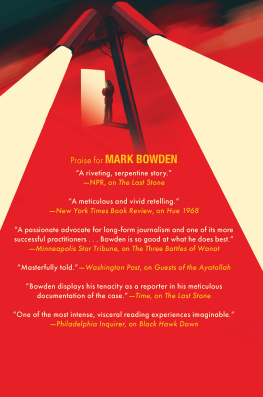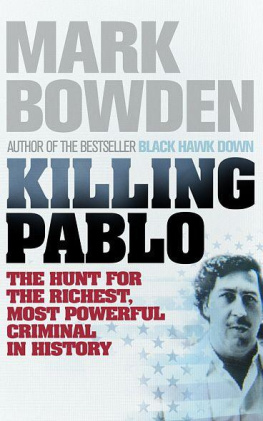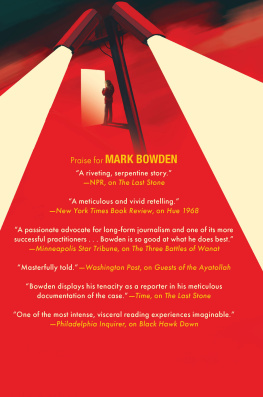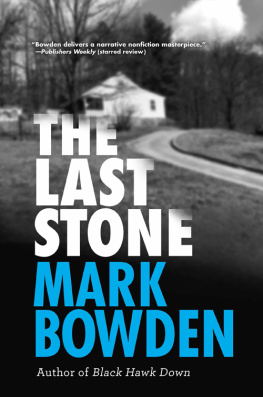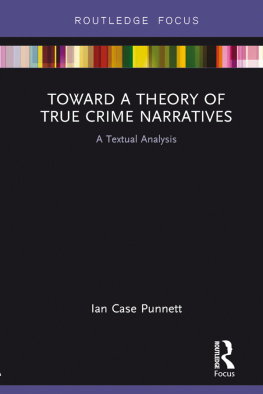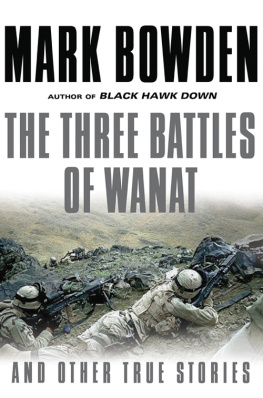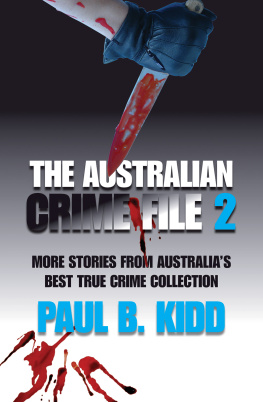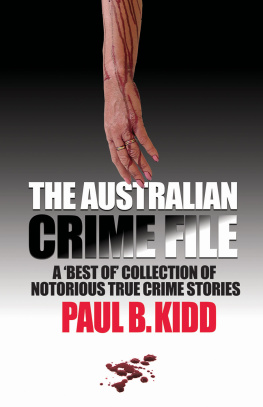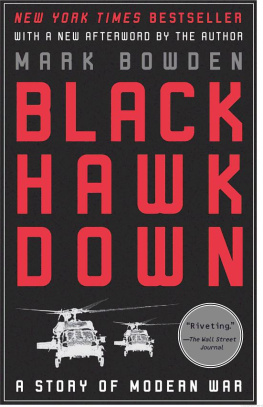Also By Mark Bowden
Doctor Dealer
Bringing the Heat
Black Hawk Down
Killing Pablo
Finders Keepers
Road Work
Guests of the Ayatollah
The Best Game Ever
Worm
The Finish
The Three Battles of Wanat
Hue 1968
The Last Stone
Copyright 2020 by Mark Bowden
Jacket design Gretchen Mergenthaler
Jacket artwork by The Red Dress @ Dbut Art
The Incident at Alpha Tau Omega appeared originally in the Philadelphia Enquirer; why dont u tell me wht ur into, The Case of the Vanishing Blonde,... A Million Years Ago, and The Body in Room 348 appeared originally in Vanity Fair; Who Killed Euhommie Bond? appeared originally in Air Mail.
All rights reserved. No part of this book may be reproduced in any form or by any electronic or mechanical means, including information storage and retrieval systems, without permission in writing from the publisher, except by a reviewer, who may quote brief passages in a review. Scanning, uploading, and electronic distribution of this book or the facilitation of such without the permission of the publisher is prohibited. Please purchase only authorized electronic editions, and do not participate in or encourage electronic piracy of copyrighted materials. Your support of the authors rights is appreciated. Any member of educational institutions wishing to photocopy part or all of the work for classroom use, or anthology, should send inquiries to Grove Atlantic, 154 West 14th Street, New York, NY 10011 or permissions@groveatlantic.com.
FIRST EDITION
Published simultaneously in Canada
Printed in the United States of America
First Grove Atlantic hardcover edition: July 2020
Library of Congress Cataloging-in-Publication data is available for this title.
ISBN 978-0-8021-2844-7
eISBN 978-0-8021-4632-8
Atlantic Monthly Press
an imprint of Grove Atlantic
154 West 14th Street
New York, NY 10011
Distributed by Publishers Group West
groveatlantic.com
20 21 22 22 10 9 8 7 6 5 4 3 2 1
Contents
N ewspaper reporting hones an appetite for crime. Good crime stories sell. All the bad things said about them are truethey exploit tragedy, they are voyeuristic, they generally lack any broader social importbut they are unfailingly fascinating.
When I wrote for the Philadelphia Inquirer, back in its heyday, when it had reporters based all over the region, nation, and world, we reporters competed vigorously for the papers limited news hole. You learned fast that a good crime yarn was a shortcut to page one. Our tall, darkly handsome Sunday editor, Ron Patel, would blithely sweep aside the most important news of the week to make room for one. He called them, affectionately, dirtballs, and would literally rub his hands together with delight as he read them. We dubbed him The Dark Prince.
Ron reserved a space on the Sunday front page for what he considered the most compelling read in that days paper, which back then reached well over a million readers. Very often these were crime stories, and this being Philadelphia, there was no shortage of material. There was the one about the kid who was killed when, fleeing a bank robbery in the suburbs on a motorcycle, he crashed when a dye pack in the money bag explodedhe was found mangled and blue; or the dentist who recruited two thugs to cut off half his index finger so he wouldnt be able to work anymore and could collect a big insurance payout; or the transit-bus accident that generated about two times more insurance claims from passengers than it could hold. Ron would strip the headlines of such stories across the very top of page one, over the masthead. The Dirtball Strip was coveted real estate for young staffers, and we vied for it weekly, no matter what our assigned beats. I have never lost my appetite for such tales.
The Incident at Alpha Tau Omega, published in 1983, is from that era; it ran on the cover of the Inquirers Sunday magazine, an even more coveted spot. At the time, it was a controversial story in the newsroom, given that most men (and newspaper staffs were then, even more than today, predominantly male) thought that any young woman foolish enough to attend a college frat party drunk and tripping on acid could more or less expect to be sexually assaulted. The attitude of some of the editors was, Why are we making a big deal out of this? There has been a significant and appropriate social adjustment since then. Incidents like the one at ATO still happen, of course, only now they are often front-page news. Women are still being sexually exploited, but less and less is such male behavior considered somehow normal or understandable. Im proud of the story, because it got beyond the binary legal argumentrape versus not rapeto grayer and more difficult moral terrain.
Crime has been a part of my work ever since. Three of my books, Doctor Dealer, Finders Keepers, and The Last Stone are of that genre, and several others arguably belong to itThe Finish and Killing Pablo, about the successful efforts to track down and kill Osama Bin Laden and Pablo Escobar, respectively. Crime has been the subject of many of my shorter works, produced for magazines like the Atlantic, Vanity Fair, and others.
Over the years I have seen these stories increasingly influenced and often shaped by audio and video recordings. One of the biggest challenges for anyone trying to write nonfiction with the immediacy of fiction is to do it without inventionwithout expanding on what can be confidently known. In the past, scenes were usually reconstructions, dependent almost entirely on the memory of participants. For a writer like me, audio and video recordings are like gifts from God. When I started as a newspaper reporter in the 1970s, it was rare to have a photo or recording of anything I wrote about. Today it is rare not to have such material. In fact, there is often so much of it that it poses new challenges.
Years ago, recordings or transcripts existed for things like trials, depositions, and hearings, for events closely covered by news organizations, or purely by chance, as with the shaky film footage shot by Abraham Zapruder that captured the assassination of John F. Kennedy and the TV coverage of the killing of his assassin, Lee Harvey Oswald, days later. Such raw material was relatively rare. Today cameras are everywhere. Virtually every store, library, bank, highway intersection or toll booth, stadium, building lobby, parking lot, and city street corner has one or more running continually, and nearly every citizen owns a cell phone capable of recording and publishing, or posting, videos and still images. Police increasingly wear cameras or have them mounted on their vehicles. The military mounts video cameras on drones that can watch over entire cities, with software that can zero in on specific vehicles or places over time. Increasingly, video exists for the most private of human interactions. Often raw clips of a crime surface before anything elsea sports figure striking a woman in an elevator, a cop shooting a fleeing suspect, a bomb exploding on a busy streetand the footage drives the reporting that follows, much of it increasingly devoted to interpreting and arguing about what the captured scene really shows.
This development has been invaluable for telling true stories. Re-creating past events, crafting fully realized scenes, with characters, action, and dialogue, has traditionally been the hardest part. Unless you witnessed a thing for yourself, the only way to build past scenes was by reconstructing them from written records and the memories of participants. Until fairly recently, this is how all of history has been written down, and the process is, of course, imperfect. Memory is always iffy. Records are sometimes wrong. I learned long ago to seek as many different accounts of a scene as I could before arriving at a version I could trust. My rule, when relying on interviews to re-create scenes, has been to let the reader know, either in the text or in a footnote, where the information comes fromthree sources are excellent, two are good, one is sketchy at best. Crafting scenes calls for extreme detail. You cant just ask a source, What did you do? Or, What did you say? You must ask, What

